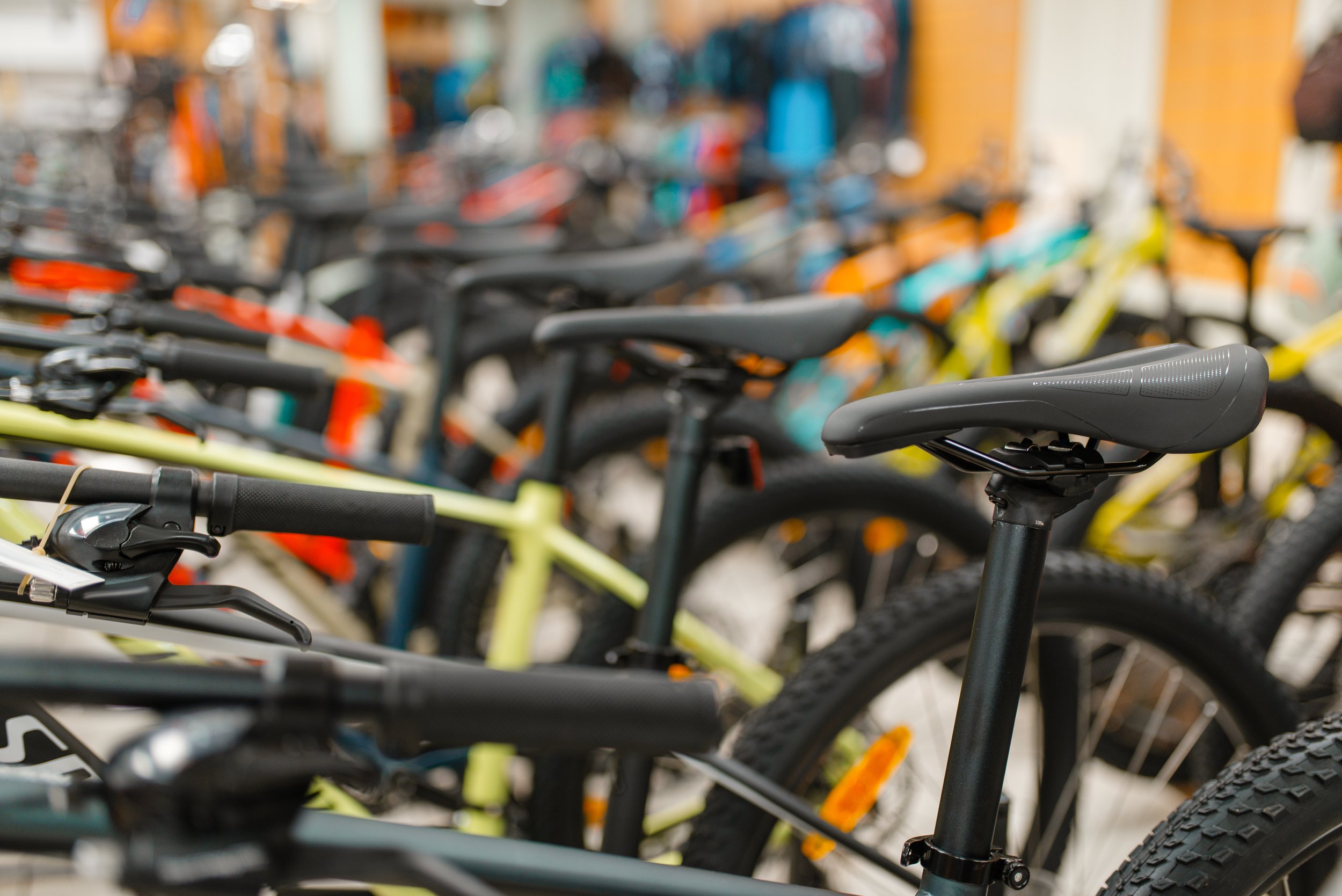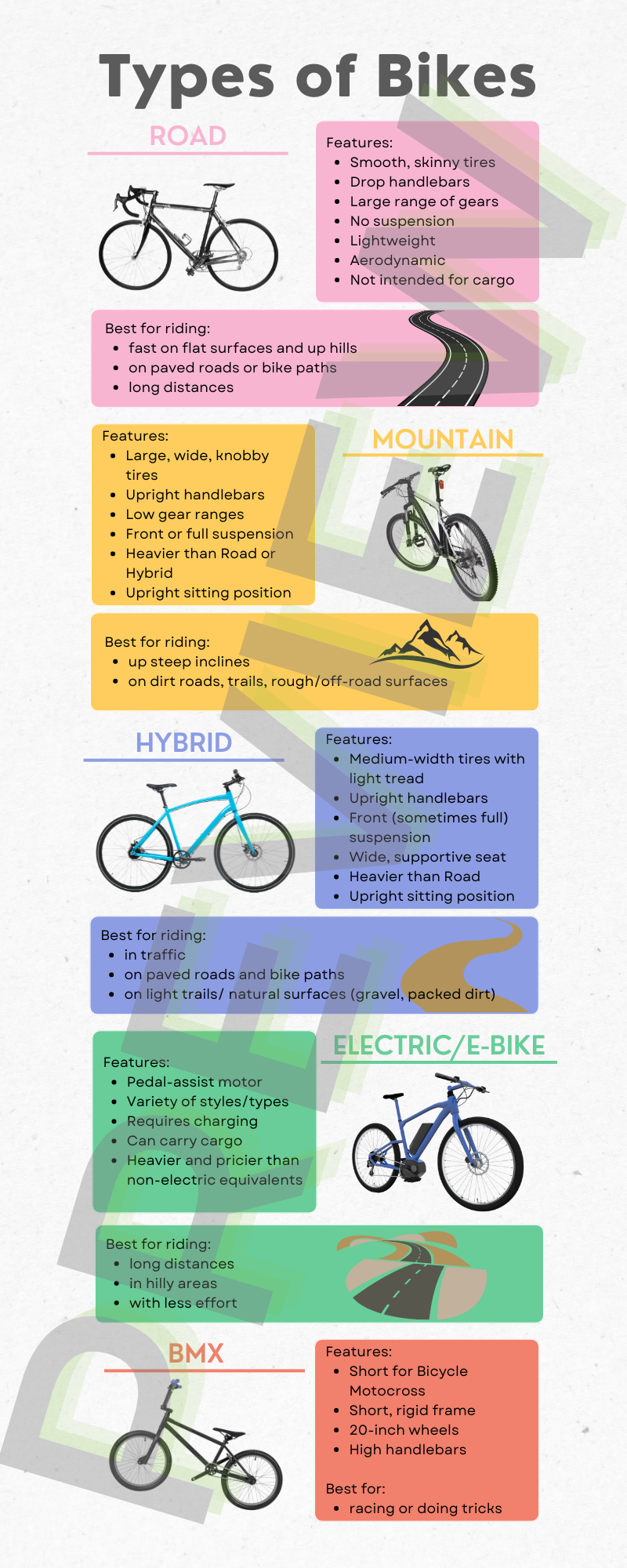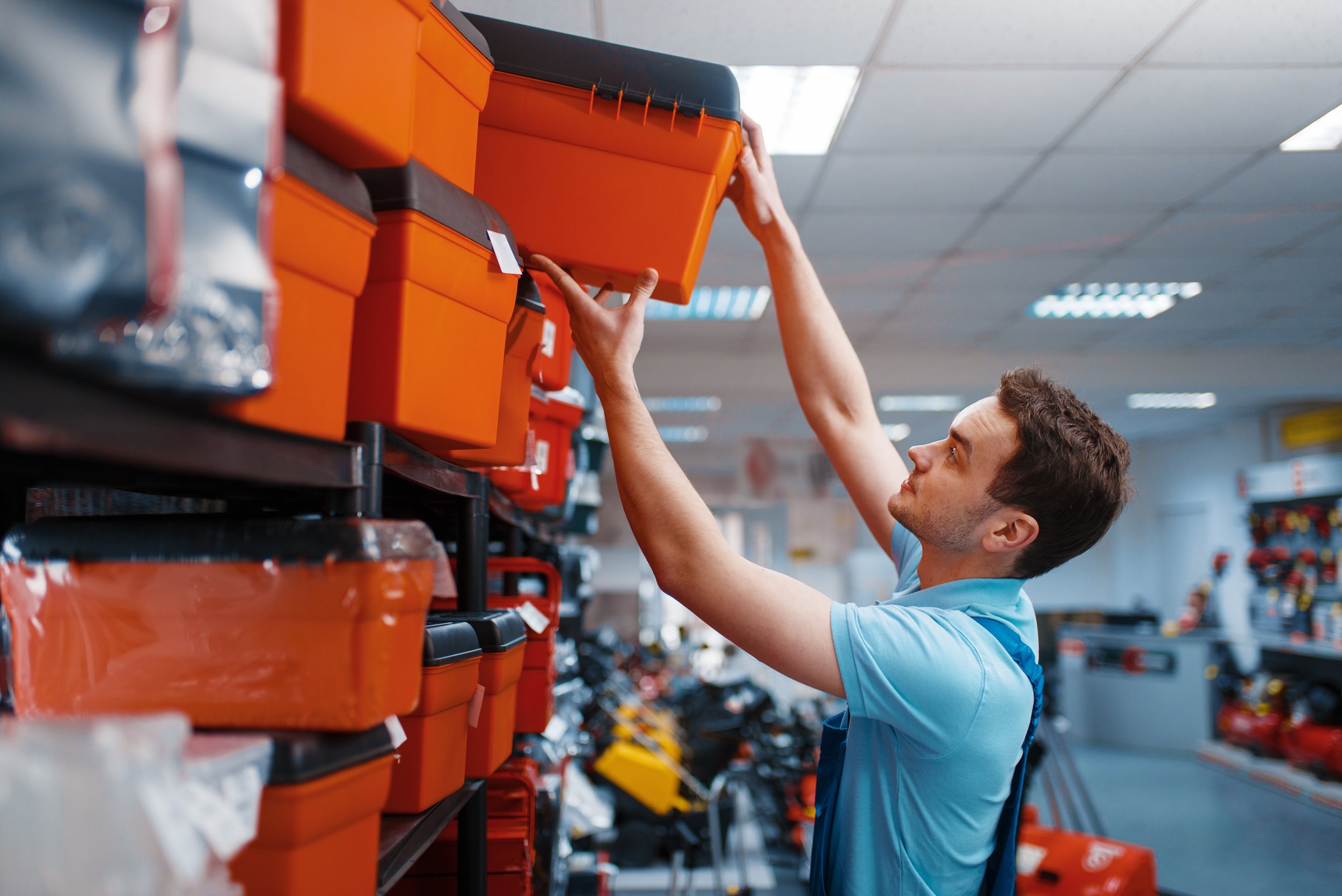Selling Bikes - Basics
Languages: English
Media Editing: The video module(s) in this subject are editable under our Content Studio offering unless otherwise indicated. For more information about Content Studio, contact your CSM.
Description: Bikes are a popular vehicle for people of all ages. Whether they’re ridden recreationally, professionally, or for transportation, it’s important that their riders are comfortable. The wrong size or type of bike can make injuries more likely and make biking less enjoyable. In this subject, employees will learn about the most common types of bikes, how to fit adults and kids properly for a bike, and general best practices for selling customers the right bike for their unique needs.
Languages: English
Media Editing: The video module(s) in this subject are editable under our Content Studio offering unless otherwise indicated. For more information about Content Studio, contact your CSM.
Description: Bikes are a popular vehicle for people of all ages. Whether they’re ridden recreationally, professionally, or for transportation, it’s important that their riders are comfortable. The wrong size or type of bike can make injuries more likely and make biking less enjoyable. In this subject, employees will learn about the most common types of bikes, how to fit adults and kids properly for a bike, and general best practices for selling customers the right bike for their unique needs.
Languages: English
Media Editing: The video module(s) in this subject are editable under our Content Studio offering unless otherwise indicated. For more information about Content Studio, contact your CSM.
Description: Bikes are a popular vehicle for people of all ages. Whether they’re ridden recreationally, professionally, or for transportation, it’s important that their riders are comfortable. The wrong size or type of bike can make injuries more likely and make biking less enjoyable. In this subject, employees will learn about the most common types of bikes, how to fit adults and kids properly for a bike, and general best practices for selling customers the right bike for their unique needs.
Topics
Finding the Right Bike for a Customer
-
Buying the right bike can have a significant impact on a person’s biking experience. In this topic, you’ll learn some best practices for selling a bike to a customer in your store. This includes the types of questions to ask the customer, the difference between adult, women, and kids bikes, as well as general suggestions you can make to ensure the customer is happy and confident in their purchase. You’ll also learn about the benefits and downsides of different frame materials like steel, aluminum, and carbon fiber.
-
Questions (level 1, 2, 3)
Video module
-
This topic is currently available in English.
-
The first question you should ask a customer buying a bike is “where do you plan to ride it?” This will help you offer better recommendations since most types of bikes are categorized by what surfaces they are ridden on.
Ask customers what their budget is for their bike, as certain types, frame materials, and components can greatly influence the cost of the bike.
Adult bike sizes are based on the size of the bike’s frame, which can differ between type and brand. The measurements aren’t universal, so it's important to measure the bike for the person.
There is no significant difference in frame size between women’s bikes and standard adult bikes. The differences are usually between the components, like the handlebars and seat.
Suggest customers buy a bike suited to their current abilities to make sure they can ride it comfortably and reduce the risk of injury. As they improve, they can adjust it to their new abilities.
If your store allows it, suggest that customers test ride their bike before they purchase it to make sure it is the right fit for them and their intended use.
Carbon fiber bike frames are very light but strong and offer reduced vibrations when riding. While it can last longer than other materials, it’s typically more expensive and doesn’t do well under excessive stress.
Aluminum bike frames are both light and stiff, less likely to rust, and are a cheaper option than carbon fiber frames. However, riders tend to feel more vibrations.
Steel bike frames are sturdy, heavy, and generally cheaper than other materials. Their strength makes them comfortable to ride, but they can be prone to rust.
Types of Bikes
-
Not every customer will know exactly what type of bike they want. It’s important that you can accurately answer questions customers may have about what type of bike is best for their unique needs. In this topic, you’ll learn about the differences between road, mountain, hybrid, electric, and BMX (bicycle motocross) bikes.
-
Questions (level 1, 2, 3)
Video module
PDF module (This module was created in a tool that is not supported by our Content Studio offering.)
-
This topic is currently available in English.
-
Road bikes typically have smooth, skinny tires, and drop handlebars (drop down and backwards), allowing the rider to adjust their hand and body positions for climbing or aerodynamics.
Road bikes are lightweight, compared to other bikes, have a large range of gears, and no suspension. This allows them to be ridden fast, especially on smooth, flat surfaces as well as up hills, but doesn’t make them great for carrying loads.
Road bikes are best for riding on flat or paved roads or bike paths, especially at fast speeds or for long distances.
Mountain bikes have low gear ranges and flat (upright, riser) handlebars. These features allow riders to climb steep inclines and sit more upright on the bike.
Mountain bikes have large, wide, knobby tires and either front (hardtail) or full suspension. These features allow for greater shock absorption on rough terrain and make the bike heavier than most road or hybrid bikes.
Mountain bikes are best for riding on dirt roads, trails, or other rough/off-road surfaces.
Hybrid bikes are a mix between a road bike and a mountain bike with medium-width tires, some tread, upright handlebars, and front suspension. These features also mean they’re typically heavier than road bikes, even more so when they have full suspension.
Hybrid bikes allow riders to sit in a more upright position with a wide, supportive seat. This makes them more comfortable to ride and helps increase riders’ visibility when riding in traffic.
Hybrid bikes are best for riding on mixed surfaces like paved roads, light trails/natural surfaces (gravel, packed dirt), and bike paths.
Electric bikes (e-bikes) have a pedal-assist motor and battery and come in a variety of styles. The motor helps reduce the amount of effort the rider needs to use, especially for long distances or in hilly areas, but it requires regular charging.
Electric bikes (e-bikes) are typically heavier and pricier than their non-electric equivalents, but capable of carrying cargo.
BMX (bicycle motocross) bikes are designed for racing or doing tricks. They have a short, rigid frame, high handlebars, and 20-inch wheels.
Preview of PDF module for “Types of Bikes”.
How to Fit Adult Bikes
-
Once a customer has chosen what type of bike they’d like to purchase, it’s important that their bike is the right fit for them. Not only does this allow for more comfortable riding, but it can also help prevent injuries and strain. In this topic, you’ll learn how to properly measure and fit an adult customer to their ideal bike. This includes choosing the right frame size and adjusting the seat and handlebars.
-
Questions (level 1, 2, 3)
PDF module (This module was created in a tool that is not supported by our Content Studio offering.)
-
This topic is currently available in English.
-
When fitting a customer for a bike, make sure they are wearing the shoes they bike in to get an accurate measurement. Shoes often add height and can affect how a customer sits on the bike.
When fitting a customer for a bike, measure for the specific bike type and brand they want to purchase as sizes can differ between types and brands of bikes.
Step 1: Determine the appropriate bike frame size. Start by measuring or asking for the customer’s inseam (inner leg length), then use the various bikes’ size charts to find the appropriate frame size.
If a customer is between bike sizes, recommend the smaller size. This will make it easier for them to get on and off the bike.
Step 2: Check the standover height. Ask the customer to straddle the bike between the seat and handlebars with their feet flat on the floor. If there are a couple of inches (several centimeters) of space between the customer and the top tube of the bike, the frame is a good fit. If there isn’t enough space, try a smaller frame size.
Step 3: Check the seat height. Hold the bike stationary and ask the customer to sit on the bike’s seat with their feet on the pedals. Next, ask them to pedal backward until one of the pedals is in its lowest position. The associated leg should be fully extended but with a slight bend (15-20 degrees) in the knee if the seat is at the right height. If it’s not, adjust the seat height until it is, switching frame sizes if necessary.
Step 4: Check the seat angle. Ask the customer to position the pedals parallel with the ground. The customer’s front knee should be aligned over the ball of their foot, and the bike seat should be level and parallel with the ground if it’s positioned correctly.
Step 5: Check the handlebars. Ask the customer to lean forward, while maintaining a straight back, and grab the handlebars. They should be able to do so comfortably, with a slight bend in their arms and be able to reach the brakes without straining. If they have to reach too far, adjust the height and/or angle of the handlebars until they’re comfortable.
Preview of PDF module for “How to Fit Adult Bikes”.
How to Fit Kids Bikes
-
Kids bikes use different sizing methods than adult bikes. While many of the principles are the same, it’s important that you know how to fit a child to their ideal bike for maximum comfort and confidence. In this topic, you’ll learn how to choose a bike with the right wheel size for a customer, as well as how to adjust the seat and handlebars for a child’s bike.
-
Questions (level 1, 2, 3)
PDF module (This module was created in a tool that is not supported by our Content Studio offering.)
-
This topic is currently available in English.
-
Kids bike sizes are based on the size of the bike’s wheels. As the wheel size increases, so does the frame size.
Suggest customers buy a bike suited for their child’s current size that they can ride comfortably and confidently, as opposed to a bike that they will grow into. This way, the bike won’t be too heavy, difficult, or uncomfortable to ride.
When fitting a child for a bike, measure for the specific bike type and brand they want to make sure it will fit them properly.
Step 1: Determine the appropriate bike wheel size. Ask for or measure the child’s height and/or inseam (inner leg length) with their shoes on, then use the various bikes’ size charts to identify the appropriate wheel size, ranging from (12-24 inches (30-60 centimeters). If they require larger, you need to move into adult bikes.
If a child is between bike sizes, it’s typically best to recommend the larger size, especially if the child is a confident rider. This will allow them to ride the bike longer.
Step 2: Check the standover height. Ask the child to straddle the bike between the seat and handlebars with their feet flat on the floor. If there are a couple inches (several centimeters) of space between the child and the top tube of the bike, the bike size is a good fit. If there isn’t enough space, try a smaller wheel size.
Step 3: Check the seat height. Hold the bike stationary and ask the child to sit upright on the bike’s seat with their feet on the pedals. Next, ask them to pedal backwards until one of the pedals is in its lowest position. The associated leg should be fully extended, but slightly bent. If it’s not, adjust the seat height until it is.
Step 4: Check the child’s foot placement (experienced). For experienced riders, the seat should be at a height that allows the child to touch the ground with their toes when they’re not pedaling.
Step 4: Check the child’s foot placement (beginner). For beginner riders, the seat should be low enough (without breaching the minimum seat height) that the child can place their feet flat on the ground when seated on the bike. This makes it easier for them to get on and off and reach the ground if needed when riding.
Step 5: Check the handlebars. Ask the child to lean forward and grab the handlebars. They should be able to do so comfortably, with their head up and a slight bend in their arms and be able to reach the brakes without straining. If they have to reach too far, adjust the height and/or angle of the handlebars until they’re comfortable.
Preview of PDF module for “How to Fit Kids Bikes”.









